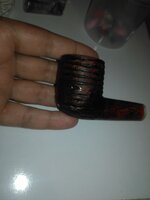I'd like to make my pipe all black, but the briar is brown. Is it possible to color it black, for example. with some leather / shoe color products without interfering the future taste of the pipe ?
You are using an out of date browser. It may not display this or other websites correctly.
You should upgrade or use an alternative browser.
You should upgrade or use an alternative browser.
How to color a briar pipe bowl?
- Thread starter Winblows
- Start date
Leather or shoe dye is the ideal approach from what I've read thru restoration projects. Just don't do anything to the inside of the bowl.
- Thread starter
- #3
Thanks!Leather or shoe dye is the ideal approach from what I've read thru restoration projects. Just don't do anything to the inside of the bowl.
Actually, this was my first thought, but I would hardly destroy my Stanwell, so to be sure, I'm asking members here

Last edited:
You bet and if you wish to confirm Google leather dye briar pipe and you'll find endless restorations using it.
If you are after a "ebony" look, you will have a tough time getting a briar bowl to be all black with alcohol dyes. The grain will absorb more dye and stand out no matter what you do. If you are OK with the grain showing up, it will work just fine. I will suggest sanding the briar with 500 or 600 grit paper to remove all old waxes and surface grime. Your dye will work much better. Hope this helps.
Just to add Fiebings's tends to be a standard among pipe makers.
And remember, lots of pics
And remember, lots of pics
- Thread starter
- #7
Most of us know them, the Missouri Meerschaum Corn Cob pipe.
It was my first pipe, The "Elf" model.
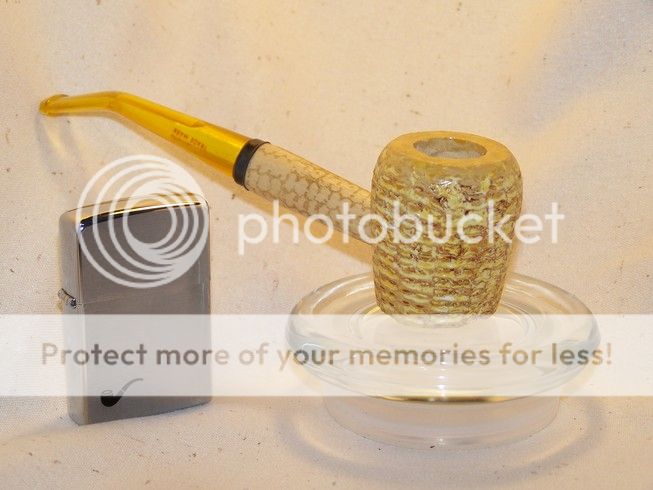
Now it looks like this:
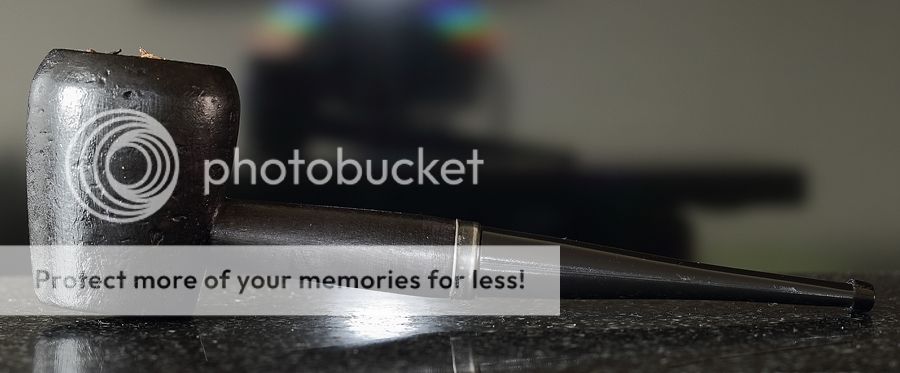
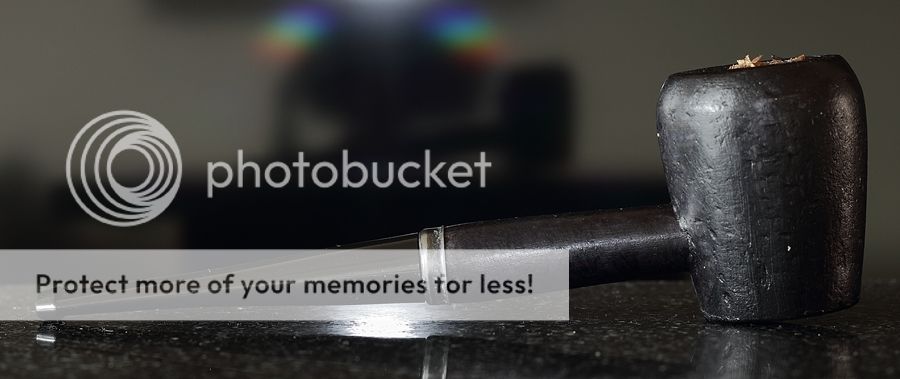
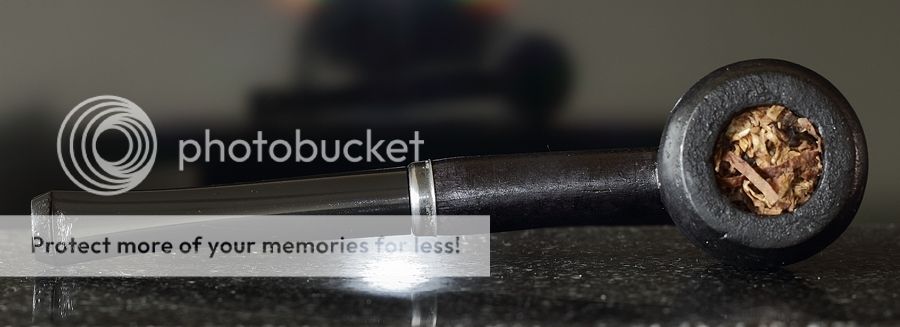
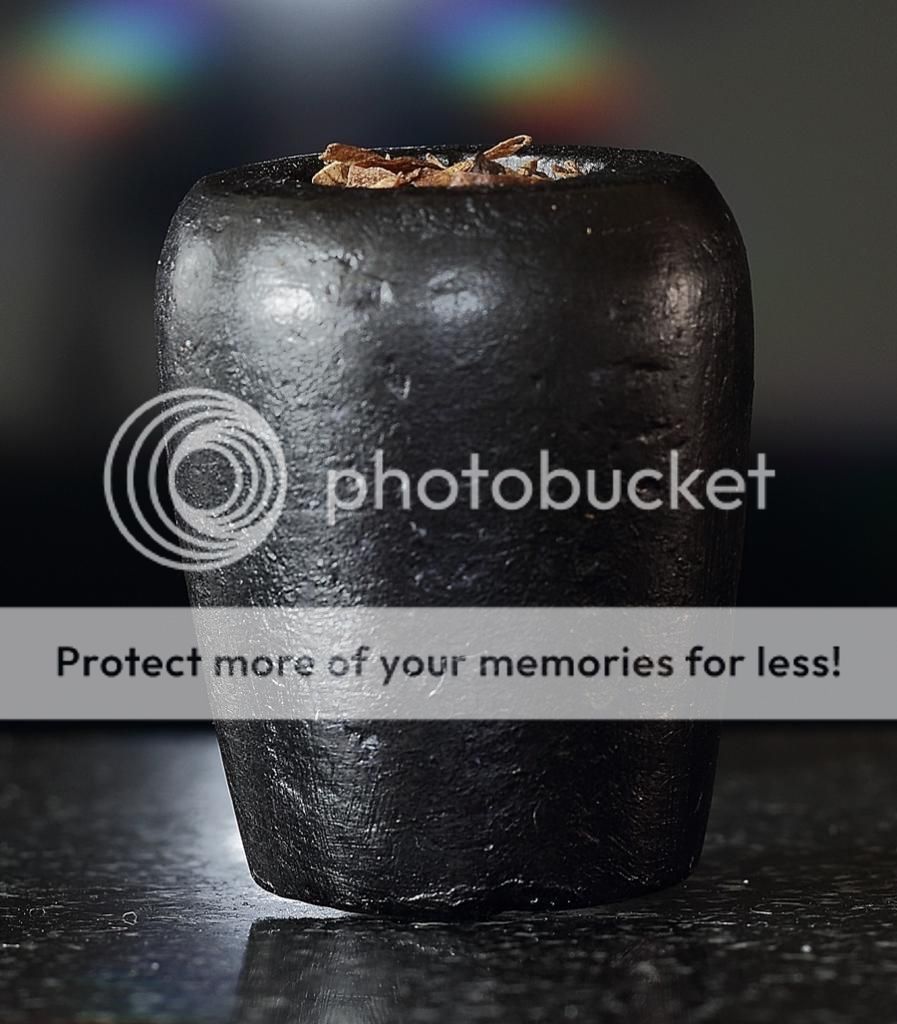
It was my first pipe, The "Elf" model.

Now it looks like this:




We that is really wicked looking. Way to go!
You did that with leather dye? Nice!
- Thread starter
- #10
It's not easy to find a shop that sells the Fiebing's in DK, not like in US, where you can get it in Walmart for $2.58.

I have finally found a shop in Copenhagen, but they are "out of stock" in black right now.
So I did something else.
I don't know, how it's called in English (neither do Google Translate), but it's some powder, that is alcohol-soluble and you make the substance by yourself. It's used to color tree.
I had to add several layers, before the bowl became really black, but the result was very matt/dull, so I finished with the KIWI shoe polish.

A dirty and annoying/complicated process.
I'll wait for the black Fiebing's before I do anything further.

I have finally found a shop in Copenhagen, but they are "out of stock" in black right now.
So I did something else.
I don't know, how it's called in English (neither do Google Translate), but it's some powder, that is alcohol-soluble and you make the substance by yourself. It's used to color tree.
I had to add several layers, before the bowl became really black, but the result was very matt/dull, so I finished with the KIWI shoe polish.

A dirty and annoying/complicated process.
I'll wait for the black Fiebing's before I do anything further.
- Thread starter
- #11
Finally, I've got the "right stuff"
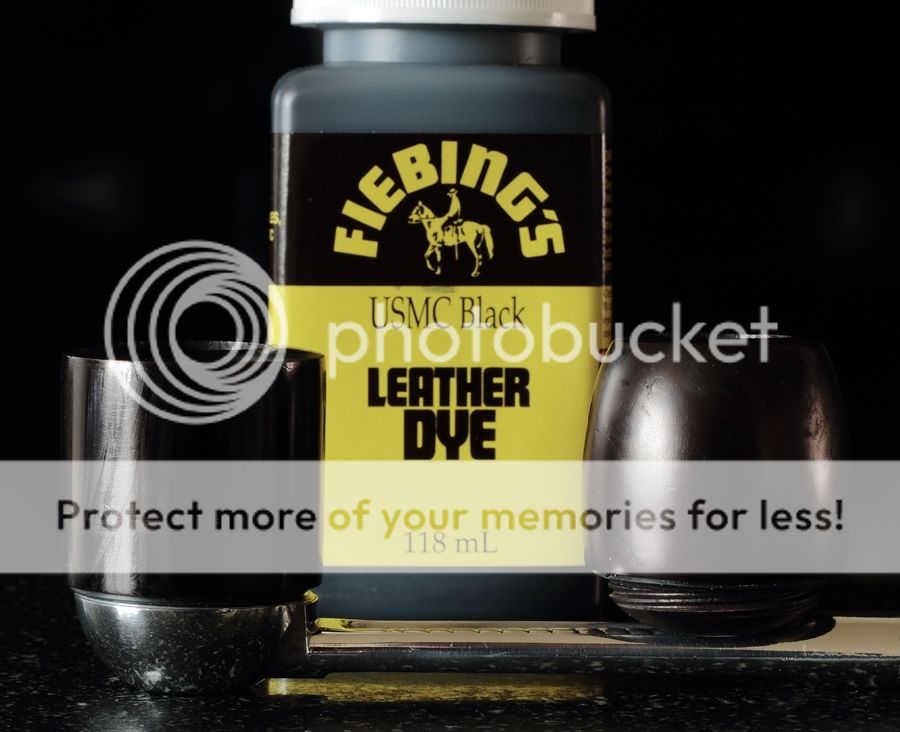
Looks butch better with the silver color stem.

Last edited by a moderator:
Wow those look nice. I'm glad you were able to find some of the Fiebing's dye.
I confirm there are different ways of approach to a deliberate color of wood especially for a pipe but what I suggest is not based on my speculation but just trial and error on a watery precolored piece of Briar.I'd like to make my pipe all black, but the briar is brown. Is it possible to color it black, for example. with some leather / shoe color products without interfering the future taste of the pipe ?
First of all, I predefined the base of absorbent field applying enough paraffin and leave it a day. Then the desired color in base ink structure agitated in paint thinner should be applied by a small brush twice or more in the sequence of one day delay each.
Third step is to brush colorless nail polish dissolved in small amount of thinner again.
The result will be glossy colored wood having no porosity.
Attachments
Kilroy6644
Smoking a corn dog in aviators and a top hat
This is an old topic, but to add another option for anyone else who may want to explore that path, I use ferrous acetate (a.k.a. vinegar on to leather workers).
You take some fine steel wool, soak it in vinegar for a day or so, then strain it through a coffee filter to remove any particulates. Keep the liquid; toss the rest. It reacts with the tannins in the wood to give it an aged look. More tannins equals a darker color. Maple turns a light gray, oak is darker, walnut is black. Plain briar turns a battleship gray.
To add tannins, make a cup of strong tea and soak the pipe for a while. Longer = darker. The tea won't affect the taste. Then coat the outside with your ferrous acetate solution. It will change color almost instantly. Make a solution of baking soda and water, and put the pipe in it for a minute or two to neutralize the vinegar. Then rinse the pipe under running water to clear out the baking soda. Let it dry. The resulting color is nice and dark, and won't bleed or rub off.
Here are two of my pipes I've done this to.

As you can see, they are not strictly speaking "black," but they are quite dark. Whether they're dark enough is a matter of personal preference. This obviously isn't a substitute for leather dye, but is another way of getting a dark color, that has the benefit of using materials that are easily found at home, or at the local store in the worst case scenario.
Caveat: I've only done this with low-end pipes where I wasn't concerned about the finish. There's a possibility that being exposed to that much moisture (particularly during the tea soak) could raise the grain, which may need to be sanded down on a smooth pipe. The top pipe in my picture was unfinished, and was smooth enough for me. Had I chosen to sand it smoother, I would have discovered that while the color won't bleed or rub off, it can be sanded off. So this method may not be the best if you want a glossy finish.
You take some fine steel wool, soak it in vinegar for a day or so, then strain it through a coffee filter to remove any particulates. Keep the liquid; toss the rest. It reacts with the tannins in the wood to give it an aged look. More tannins equals a darker color. Maple turns a light gray, oak is darker, walnut is black. Plain briar turns a battleship gray.
To add tannins, make a cup of strong tea and soak the pipe for a while. Longer = darker. The tea won't affect the taste. Then coat the outside with your ferrous acetate solution. It will change color almost instantly. Make a solution of baking soda and water, and put the pipe in it for a minute or two to neutralize the vinegar. Then rinse the pipe under running water to clear out the baking soda. Let it dry. The resulting color is nice and dark, and won't bleed or rub off.
Here are two of my pipes I've done this to.
As you can see, they are not strictly speaking "black," but they are quite dark. Whether they're dark enough is a matter of personal preference. This obviously isn't a substitute for leather dye, but is another way of getting a dark color, that has the benefit of using materials that are easily found at home, or at the local store in the worst case scenario.
Caveat: I've only done this with low-end pipes where I wasn't concerned about the finish. There's a possibility that being exposed to that much moisture (particularly during the tea soak) could raise the grain, which may need to be sanded down on a smooth pipe. The top pipe in my picture was unfinished, and was smooth enough for me. Had I chosen to sand it smoother, I would have discovered that while the color won't bleed or rub off, it can be sanded off. So this method may not be the best if you want a glossy finish.
The very best way to treat a virgin briar (unfinished) is to smoke it in my opinion. This allows the briar to breathe and they color beautifully as you smoke them. YMMVI'd like to make my pipe all black, but the briar is brown. Is it possible to color it black, for example. with some leather / shoe color products without interfering the future taste of the pipe ?
Similar threads
- Replies
- 33
- Views
- 3K
